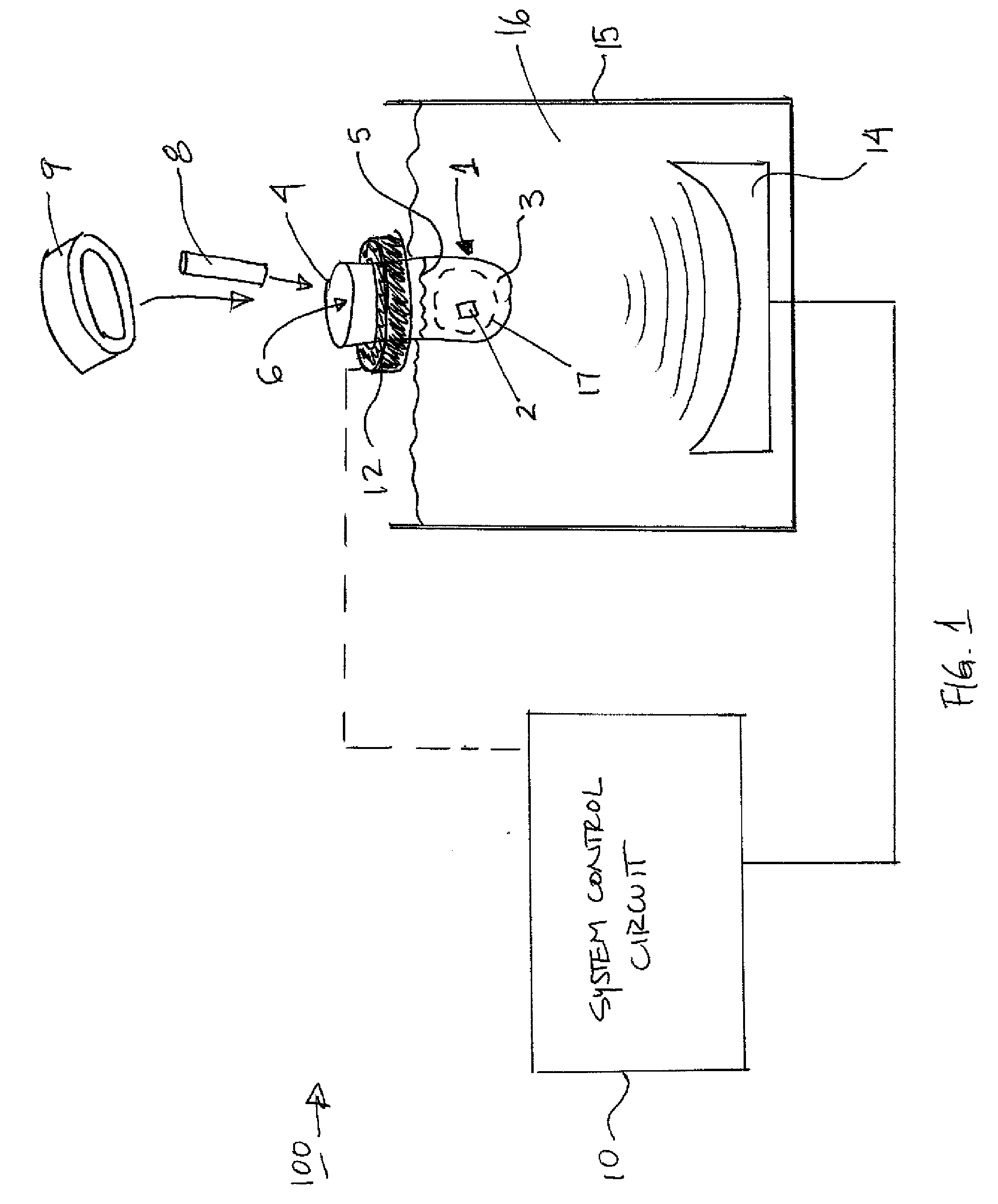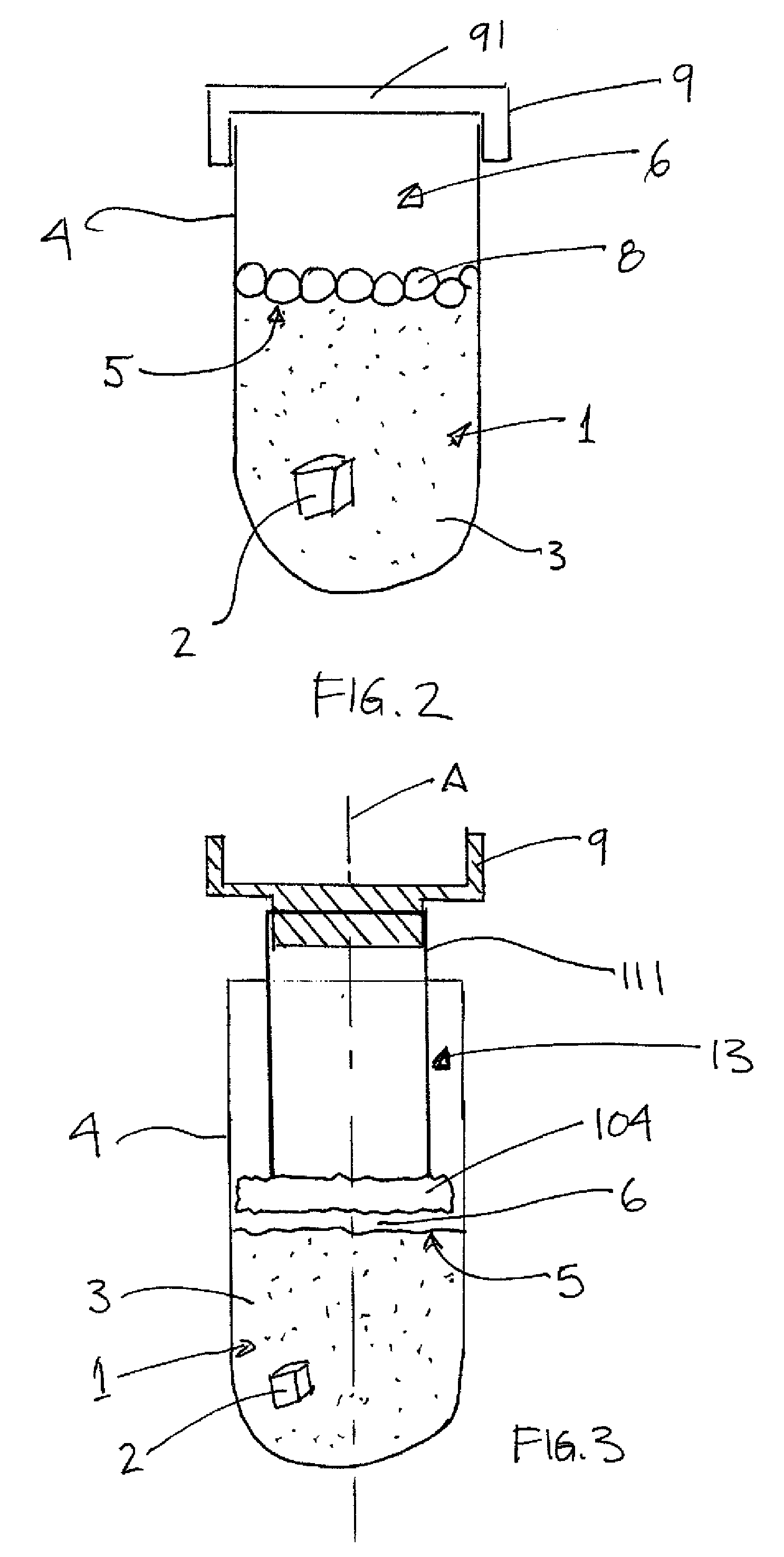Method and apparatus for treatment enhancement in acoustic processing of samples
a technology of acoustic energy and processing method, which is applied in the field of methods for processing samples with acoustic energy, can solve the problems of cavitation or other disruption of samples etc., and achieve the effect of reducing acoustic energy, slow and/or incomplete processing of samples
- Summary
- Abstract
- Description
- Claims
- Application Information
AI Technical Summary
Benefits of technology
Problems solved by technology
Method used
Image
Examples
example one
[0059]Tissue samples, approximately 500 milligrams of frozen chicken breast tissue (solid piece), were stored at −70 degrees C. and inserted into a test tube vessel. 1.5 milliliters of distilled water (prechilled to 13 with a porous p-propylene material functioning as a vent or filter was inserted into the tube and the member 13 moved into position just above the fluid level leaving approximately 0.5 milliliters of gas / vapor headspace. The tube was inserted into a Covaris S2 system for 30 seconds at duty cycle 20%, intensity 10, and 200 cycles / burst. The member 13 kept the sample in the focal zone, eliminated the need for a degassing step, and accelerated homogenization of the tissue sample. Following homogenization, the member 13 was removed and the vessel with the sample was capped.
example two
[0060]As in Example one above, however, after the Covaris S2 acoustic process, 4 milliliters of MeOH was added to the volume control member's 13 inner compartment (inside the cylindrical tube 111) and the member 13 was moved to enable the solvent to pass through the member 13 and into the homogenate. The homogenate plus MeOH was then treated for less than 10 seconds to mix and the member 13 was pressed to allow the extracted material to pass through the porous element 104, while leaving the particulate and material at the bottom of the vessel 4.
example three
[0061]Shearing of a 3 kb target fragment of DNA was performed using a Covaris S2 system for a single sample and a Covaris E210 system for multiple samples. A polypropylene tube was used as a vessel and was attached with a snap cap. The duty cycle used was 10% at an intensity of 0.1. There were 1,000 cycles per burst for a time period of 420 seconds. The temperature of the bath was 20 C. A frequency sweeping power mode was set under a continuous degassing mode. The volume of the vessel was 95 microliters, the buffer used being tris EDTA at pH 8.0 (no glycerol). A plug-type energy director was used. Less than 1.5 micrograms of DNA were used. The starting material including DNA fragments with lengths greater than 48 kbp.
[0062]The size and nature of the starting material (e.g., PCR products, 2 kb, 48 kb, mammalian genomic) affected the time dosages required to achieve desired shearing results (e.g., 4 minutes, 6 minutes, 8 minutes, etc.). Starting material greater than 3 micrograms was ...
PUM
| Property | Measurement | Unit |
|---|---|---|
| width | aaaaa | aaaaa |
| frequency | aaaaa | aaaaa |
| frequency | aaaaa | aaaaa |
Abstract
Description
Claims
Application Information
 Login to View More
Login to View More - R&D
- Intellectual Property
- Life Sciences
- Materials
- Tech Scout
- Unparalleled Data Quality
- Higher Quality Content
- 60% Fewer Hallucinations
Browse by: Latest US Patents, China's latest patents, Technical Efficacy Thesaurus, Application Domain, Technology Topic, Popular Technical Reports.
© 2025 PatSnap. All rights reserved.Legal|Privacy policy|Modern Slavery Act Transparency Statement|Sitemap|About US| Contact US: help@patsnap.com



